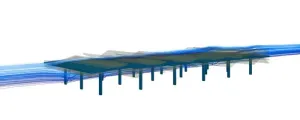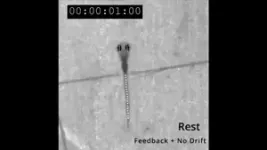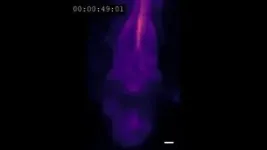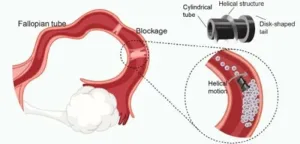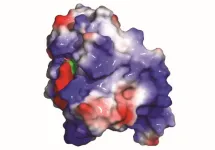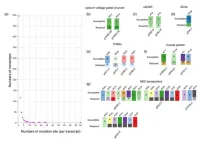(Press-News.org) WASHINGTON, Dec. 17, 2024 – Solar power is currently the fastest growing energy sector worldwide. Solar photovoltaic power plants convert sunlight into electricity and their vast potential for producing clean, renewable energy make solar power a cornerstone of the NetZero Emissions by 2050 initiative, which seeks to cut carbon dioxide emissions to zero by the year 2050.
Wind has both positive and negative effects on solar power grids. It helps maintain solar panel performance by eliminating the buildup of dirt and dust, and because solar panels typically lose efficacy as they heat up, the flow of wind over and around the surface of panels increases cooling and efficiency. However, the slender panels are vulnerable to high-wind events, even to the extent of structural collapse and failures that can take weeks to repair. In addition, insurance claims resulting from the vulnerability of photovoltaic panels to severe weather events have grown significantly with the increased use of solar energy.
In Physics of Fluids, by AIP Publishing, researchers at the Centre for Material Forming at PLS University in Sophia Antipolis, France, proposed a unique numerical decision-making framework for solar panel protection against extreme weather conditions.
“By blending advanced fluid dynamics and artificial intelligence, we saw an opportunity to address wind damage risks innovatively and contribute to the resilience of renewable energy systems,” said author Elie Hachem.
Row spacing, ground clearance, and tilt angles have been the primary areas of focus for research teams seeking to lessen the effects of wind damage on solar panels. Tracking mounts that rotate the panels for maximum sunlight exposure remain in operation until a certain wind speed is reached. At this point, the panel goes into a presumed safe stow position parallel to the ground. While this stowing method is effective in some instances, the panels lose energy output in this position and, more importantly, are often not protected from higher wind speeds.
The framework used by the team combines advanced wind simulations with machine learning to optimize individual solar panel angles under strong winds. Unlike previous methods developed to protect the panels, this new method treats panels as independent decision-makers and identifies creative, data-driven solutions to reduce stress, significantly outperforming current safeguards.
“It’s like teaching the panels to dance with the wind, minimizing damage while protecting energy production during high wind speeds,” said Hachem.
The decision-making framework for solar panel protection challenges traditional engineering practices. It offers a scalable solution for enhancing real-world resilience, while opening the door for smarter, adaptive systems in the challenge of producing energy with net zero carbon emissions.
###
The article “Combining machine learning and computational fluid dynamics for solar panel tilt angle optimization in extreme winds” is authored by T. Michel, A. Ansaldi, J Viquerat, P. Meliga, and E. Hachem. The article will appear in Physics of Fluids on Dec. 17, 2024 (DOI: 10.1063/5.0233709). After that date, it can be accessed at https://doi.org/10.1063/5.0233709.
ABOUT THE JOURNAL
Physics of Fluids is devoted to the publication of original theoretical, computational, and experimental contributions to the dynamics of gases, liquids, and complex or multiphase fluids. See http://pof.aip.org.
###
END
Training solar panels to dance with the wind
Innovative machine learning method helps safeguard a valuable renewable energy source.
2024-12-17
ELSE PRESS RELEASES FROM THIS DATE:
Tiny robots, big impact: Revolutionizing infertility treatment with magnetic microrobots
2024-12-17
WASHINGTON, Dec. 17, 2024 — Infertility affects an estimated 186 million people worldwide, with fallopian tube obstruction contributing to 11%-67% of female infertility cases. In AIP Advances, from AIP Publishing, researchers at the SIAT Magnetic Soft Microrobots Lab have developed an innovative solution using a magnetically driven robotic microscrew to treat fallopian tube blockages.
“This new technology offers a potentially less invasive alternative to the traditional surgical methods currently used to clear tubal obstructions, which often involve ...
City of Hope scientists uncover protein that helps cancer cells dodge CAR T cell therapy
2024-12-17
LOS ANGELES — Scientists at City of Hope®, one of the largest and most advanced cancer research and treatment organizations in the U.S. with its National Medical Center named top 5 in the nation for cancer by U.S. News & World Report, have collared a tricky culprit that helps cancer cells evade CAR T cell therapy.
CAR T cell therapy harnesses the immune system to seek out and kill tumor cells. This treatment is used in certain types of leukemia and lymphoma — blood cancers. Some wily cancer cells, however, have learned how to hide from the immune system to avoid destruction. The study published today in the journal Cell could lead to more personalized therapies that ...
Discouraged zebrafish help reveal how ketamine works in the brain
2024-12-17
The decades-old anesthetic ketamine could be a game changer for treating severe depression, but there are still many questions about how the drug works, including exactly how it affects the brain’s cells and circuits.
To help answer these questions, researchers are turning to an unlikely animal: tiny, days-old zebrafish.
The millimeters-long, translucent zebrafish may not get depressed exactly like humans do, but the fish do exhibit a “giving up” behavior: they stop swimming after they realize they aren’t getting anywhere – a passive behavior that scientists use to study ...
Daily physical activity, sports participation, and executive function in children
2024-12-17
About The Study: In this cohort study of Dutch children, early-life moderate to vigorous physical activity was not associated with executive function in middle childhood. Children participating in team sports at ages 10 to 11 consistently exhibited superior executive function compared with participants in individual sports.
Corresponding Author: To contact the corresponding author, Lu Yang, MSc, email l.yang@umcg.nl.
To access the embargoed study: Visit our For The Media website at this link https://media.jamanetwork.com/
(doi:10.1001/jamanetworkopen.2024.49879)
Editor’s Note: Please see ...
Biased language in clinical handoffs may negatively impact patient care
2024-12-17
When doctors and nurses pass patient information from one shift to another — an exchange known as a “handoff” — the specific words they use behind closed doors matter more than they might realize. A new study published in JAMA Network Open shows that when clinicians hear a patient described with negatively biased language, they develop less empathy towards the patient and, in some cases, become less accurate in recalling the patient’s critical health details. Such shifts in perception may be subtle and unintentional in many cases, but as these hidden biases stack up, they can influence the care patients ultimately receive.
“A lot is going on here ...
Young English speakers are most comfortable with digital health
2024-12-17
Study shows how language, education and age affect someone’s ability to engage with digital health tools.
Digital health tools, such as patient portals, treatment apps and online appointment schedulers, are increasingly common. But not everyone is equally at home using them.
To find out how language, education and age may affect a person’s comfort in using digital tools, UC San Francisco researchers surveyed caregivers of hospitalized children at UCSF Benioff Children’s Hospitals.
The researchers found that being a Spanish speaker, having less education, and being older all made people feel less comfortable with digital health ...
Study maps bed bugs’ genomes in unprecedented detail to find out why they just won’t die
2024-12-17
Scientists mapped near-gap-free and near-error-free genomes of a susceptible bed bug strain and a superstrain around 20,000 times more insecticide-resistant, offering the broadest look yet at the full scope of their resistance mutations.
Their findings were published in the journal Insects.
Although there is no evidence that bed bugs transmit diseases to humans, their bites can cause itchy rashes and secondary skin infections. Widespread use of insecticides, including the now-banned DDT, nearly wiped out populations of these blood-sucking insects by the 1960s, making infestations ...
SwRI awarded $26 million to develop NOAA magnetometers
2024-12-17
SAN ANTONIO — December 17, 2024 —NASA and the National Oceanic and Atmospheric Administration (NOAA) recently awarded Southwest Research Institute a $26 million contract to develop magnetometers for NOAA’s Space Weather Next (SW Next) program for two missions to be launched in 2029 and 2032. The magnetometers will measure the interplanetary magnetic field carried by the solar wind.
“The instruments provide critical data to NOAA’s Space Weather Prediction Center which issues forecasts, warnings and alerts that help mitigate space weather impacts,” said Dr. Roy Torbert, a program director in SwRI’s Earth, Oceans, and Space office ...
Being digitally hyperconnected causes ‘techno-strain’ for employees
2024-12-17
A new study has shown that employees are experiencing mental and physical techno-strain due to being ‘hyperconnected’ to digital technology making it difficult for people to switch off from work.
Researchers from the University of Nottingham’s Schools of Psychology and Medicine conducted detailed interviews with employees from a range of professions and found that the cognitive and affective effort associated with constant connectivity and high work pace driven by the digital workplace is detrimental to employee wellbeing. The results have been published today in Frontiers in Organizational Psychology.
This new paper is the final part of a research ...
Missing rebound: Youth drug use defies expectations, continues historic decline
2024-12-17
Image
Adolescent drug use continued to drop in 2024, building on and extending the historically large decreases that occurred during the pandemic onset in 2020.
"I expected adolescent drug use would rebound at least partially after the large declines that took place during the pandemic onset in 2020, which were among the largest ever recorded," said Richard Miech, team lead of the Monitoring the Future study at U-M's Institute for Social Research.
"Many experts in the field had anticipated that drug use would resurge ...
LAST 30 PRESS RELEASES:
Understanding the role of linear ubiquitination in T-tubule biogenesis
Researchers identify urban atmosphere as primary reservoir of microplastics
World’s oldest arrow poison – 60,000-year-old traces reveal early advanced hunting techniques
Bristol scientists discover early sponges were soft
New study uncovers how rice viruses manipulate plant defenses to protect insect vectors
NSF–DOE Vera C. Rubin Observatory spots record-breaking asteroid in pre-survey observations
Ribosomal engineering creates “super-probiotic” bacteria
This self-powered eye tracker harnesses energy from blinking and is as comfortable as everyday glasses
Adverse prenatal exposures linked to higher rates of mental health issues, brain changes in adolescents
Restoring mitochondria shows promise for treating chronic nerve pain
Nature study identifies a molecular switch that controls transitions between single-celled and multicellular forms
USU chemists' CRISPR discovery could lead to single diagnostic test for COVID, flu, RSV
Early hominins from Morocco reveal an African lineage near the root of Homo sapiens
Small chimps, big risks: What chimps show us about our own behavior
We finally know how the most common types of planets are created
Thirty-year risk of cardiovascular disease among healthy women according to clinical thresholds of lipoprotein(a)
Yoga for opioid withdrawal and autonomic regulation
Gene therapy ‘switch’ may offer non-addictive pain relief
Study shows your genes determine how fast your DNA mutates with age
Common brain parasite can infect your immune cells. Here's why that's probably OK
International experts connect infections and aging through cellular senescence
An AI–DFT integrated framework accelerates materials discovery and design
Twist to reshape, shift to transform: Bilayer structure enables multifunctional imaging
CUNY Graduate Center and its academic partners awarded more than $1M by Google.org to advance statewide AI education through the Empire AI consortium
Mount Sinai Health system receives $8.5 million NIH grant renewal to advance research on long-term outcomes in children with congenital heart disease
Researchers develop treatment for advanced prostate cancer that could eliminate severe side effects
Keck Medicine of USC names Christian Pass chief financial officer
Inflatable fabric robotic arm picks apples
MD Anderson and SOPHiA GENETICS announce strategic collaboration to accelerate AI-driven precision oncology
Oil residues can travel over 5,000 miles on ocean debris, study finds
[Press-News.org] Training solar panels to dance with the windInnovative machine learning method helps safeguard a valuable renewable energy source.
